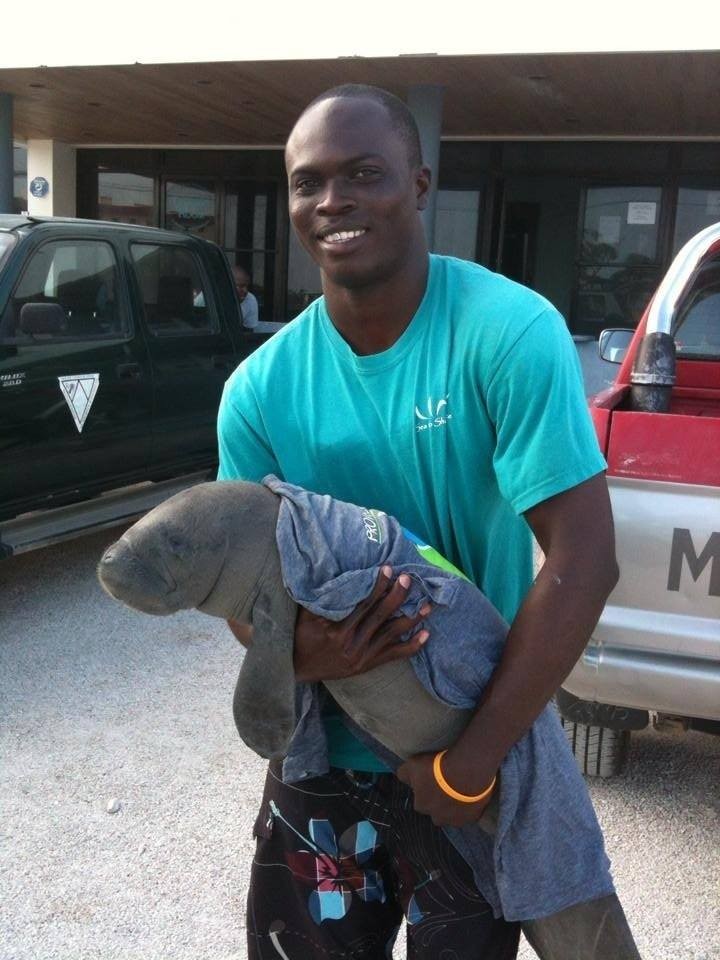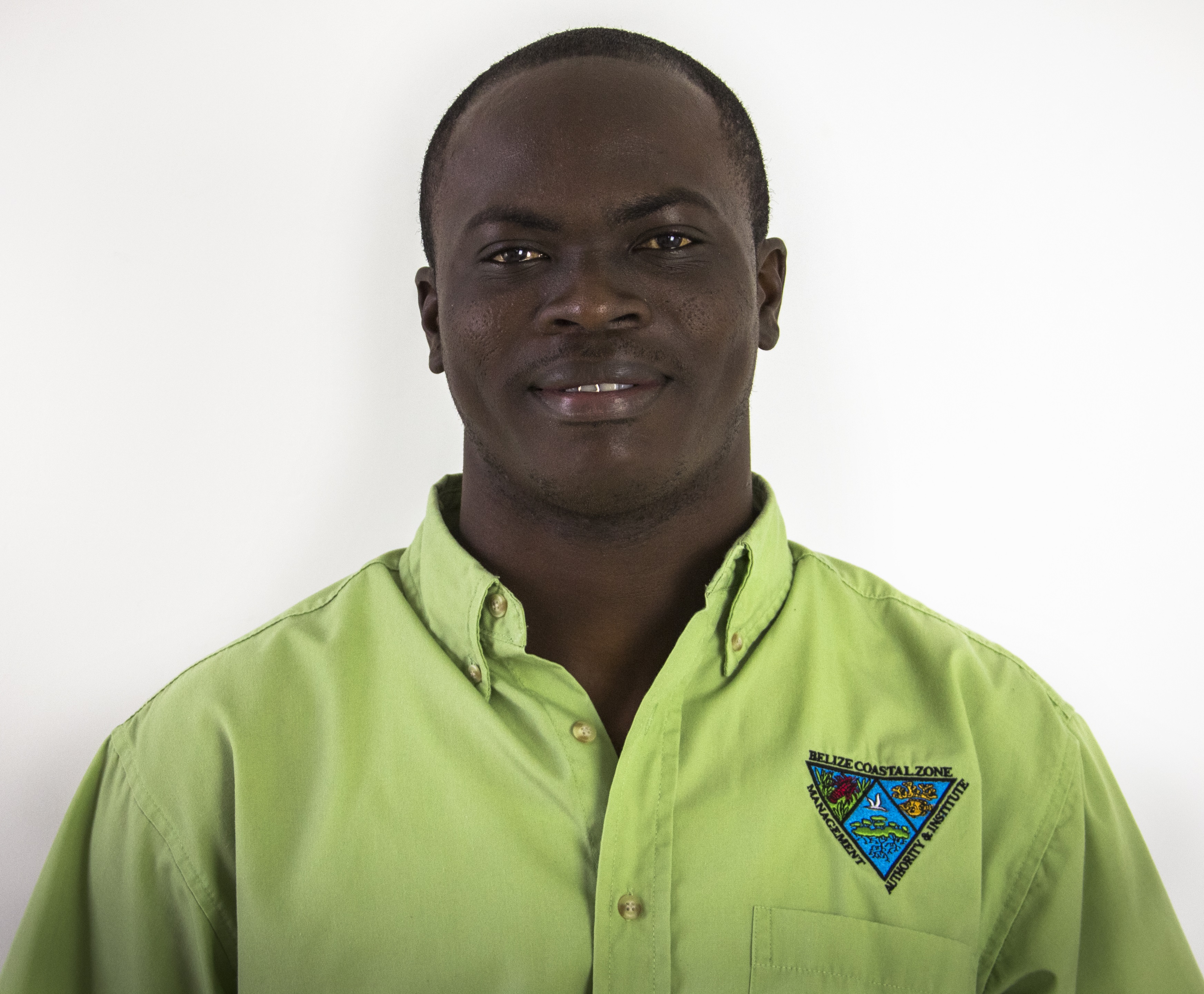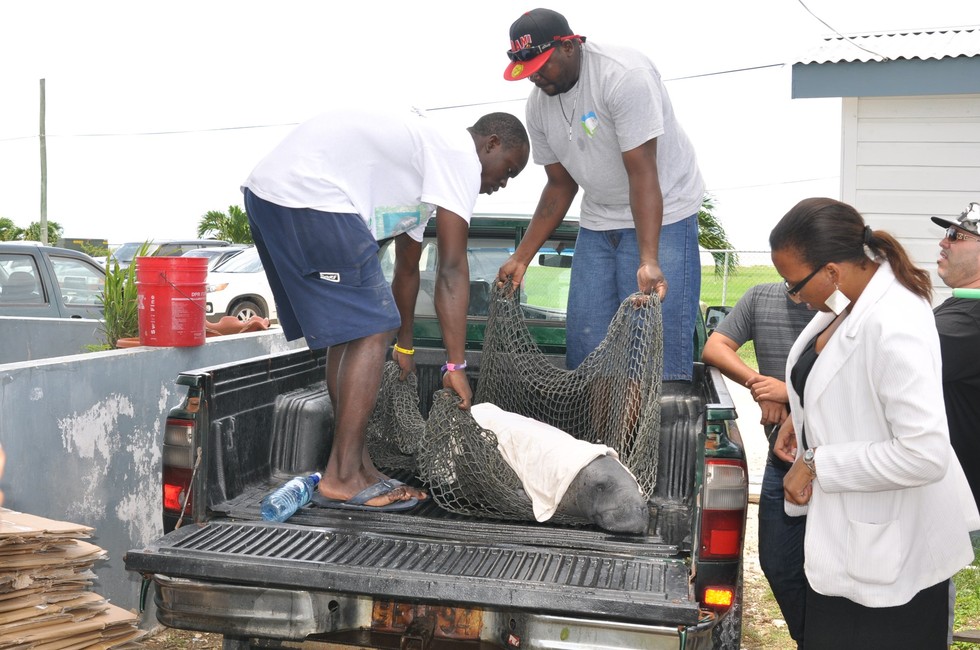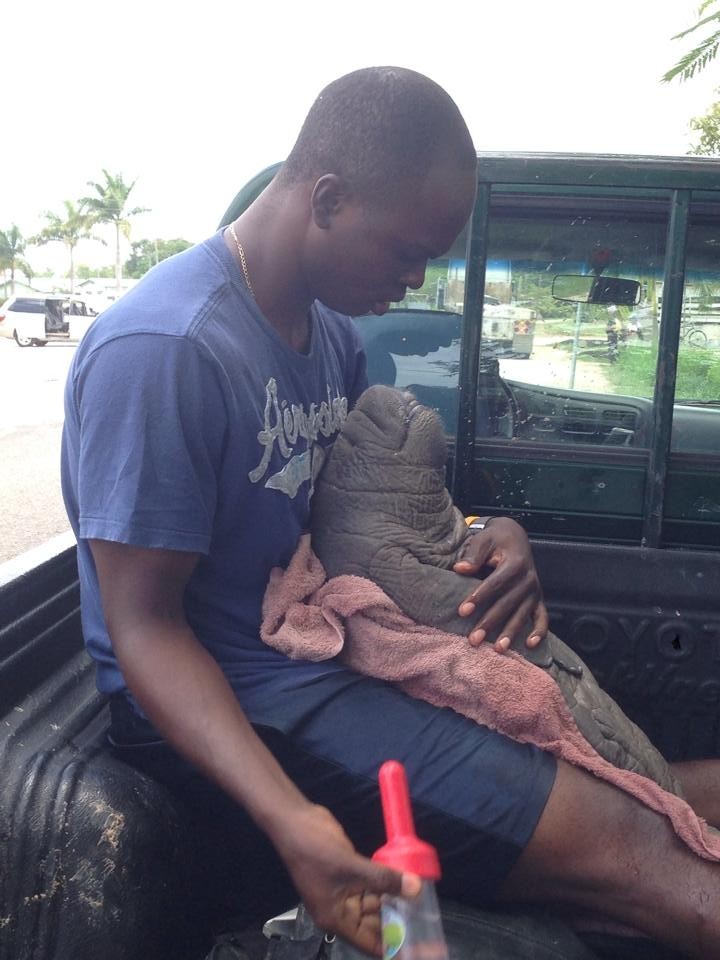Spotlight on Another Belizean Eco-Hero

After our piece on the Belize Zoo jabiru rescue we received another great story about Belizeans working to protect wildlife.
As we’ve said before, Belize’s reputation as an eco-paradise has as much to do with people as with the stunning natural environment. We’re always hearing about individuals who show a deep commitment to the environment and take it upon themselves to protect our endangered animals and ensure their survival.
Jamal Galves is one of those people:

In his home village of Gales Point Manatee, he has always been, in his words, “just that kid trying to save manatees.” As a child playing in his grandparents’ front yard Galves could watch researchers study and tag manatees, and a lifelong fascination was born. By the time he was a teen Galves was volunteering on the research boats, cleaning up and helping with various tasks.
Now, as the Belize Manatee Project Program Coordinator, he has even greater responsibility for caring for these gentle “sea cows”, taking on the roles of saviour, nurse, advocate and defender of endangered manatees.
“Some people are meant to be manatee conservationists, and that’s what I am,” he says simply. In addition to an obvious love of manatees themselves, he also points to their essential role in the ecosystem as another reason to protect them and ensure their survival.
So Belize’s “Manatee Man” as he is known, spends his days on all things manatee, and can be seen rescuing their babies, who sometimes are separated or orphaned from their slow moving mothers.
“If a mother and her calf are feeding and a boat comes, the mother’s first instinct is to run. They communicate using chirps at a low volume, and it’s very difficult for them to get back together,” he said.
So it’s Jamal and his crew to the rescue, collecting the strays, nursing them back to health, and then reintroducing them back into the wild.

He often needs to borrow a truck and or a boat to get to the calf before taking it to a rehabilitation centre where they use expensive, specially formulated imported milk to nurse the babies back to health. It’s time consuming work, and it’s getting busier all the time. Galves once conducted about one rescue a year, and he’s been out on some four rescues this year alone.
Although people have, for the most part, stopped hunting manatees over the last decades (they once were a valuable source of food in remote seacoast villages), increased boat traffic up and down Belize’s stunning Caribbean coast and cayes has created a new danger – boat strikes.
Yes, unfortunately man is once again a major threat to the manatees, and this time due more to carelessness than intent.
Belize has come a long way in identifying manatee habitats and creating “no wake” zones to protect them, but getting people to comply is another thing.
“A lot of it has to do with peoples’ lack of understanding or appreciation for manatees,” he said. “They have no respect for wake zones or no reason to comply. To me, it seems like a small, easy thing for them to comply and just slow down,” Galves said.
These strikes, combined with pollution, loss of mangroves and other habitat, as well as occasional poaching continue to threaten the manatee’s survival as a species. And when you consider that there are only about 1,000 of these beautiful animals in Belize, the loss of even one adult or calf is serious. And Galves’ role in protecting them is more valuable than ever.
So once again we have a good news/bad news story. The bad news is that manatees are threatened and continue to face increasing dangers such as boating strikes and habitat pressure. The good news is that people like Jamal Galves have risen to the challenge and are working hard to mitigate the effects their fellow humans are having on manatees and other species.

And, like the jabiru rescue, that’s the point of our story. As Belize becomes more well known as one of the world’s top eco-tourism destinations, more and more pressure will be put on those very things that make the country so attractive to people. Fortunately, Belize was one of the few, if not the only country that began a tourism industry with environmental sustainability in mind. Belize only really opened up to tourism after independence in 1981 and the industry was driven by younger, more environmentally aware people who early on saw the need to protect the nation’s stunning natural and cultural resources.
And now the results are in. With education, private sector initiatives such as Chaa Creek’s Eco-Kids environmental education summer camp, the Belize Zoo’s projects, the Belize Botanic Gardens, and various other government and private programs aimed at promoting sustainability as a national priority, things are looking up.
There is still much work to be done, but with committed people such as Jamal Galves, we can be cautiously optimistic about the future.
If any readers know of other unheralded eco-heroes, please let us know. We think they should be acknowledged and praised for their good works.
And if you want to learn more about the wonderful work Jamal and his team are doing, check out https://www.facebook.com/BelizeManateeConservation. If you want to help, have a look at http://www.gofundme.com/b50vao.